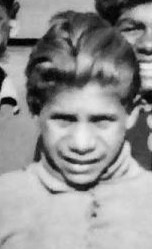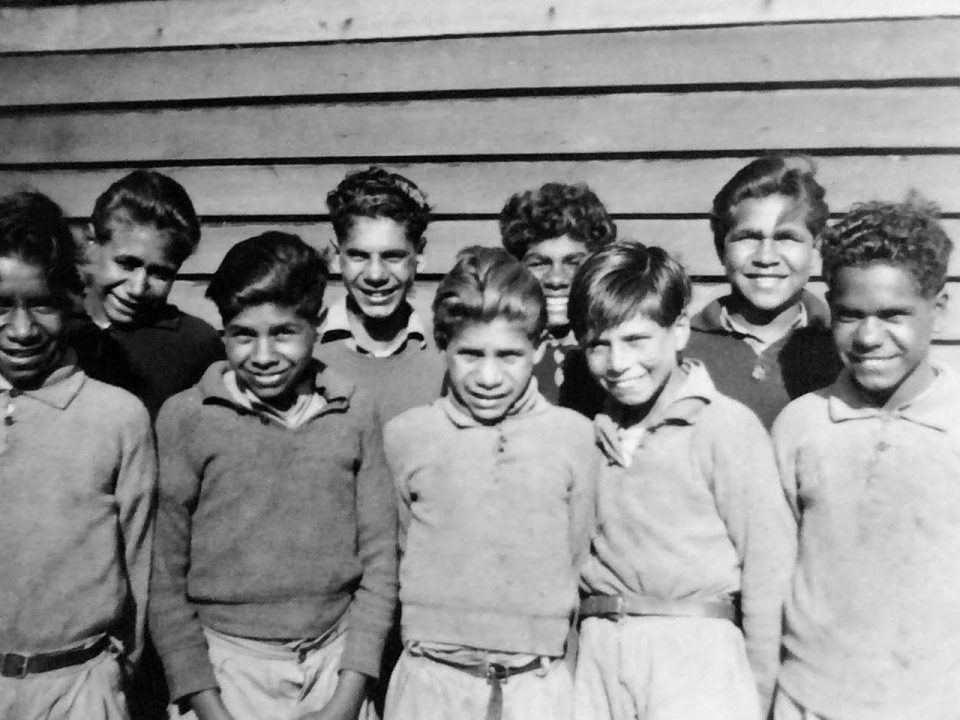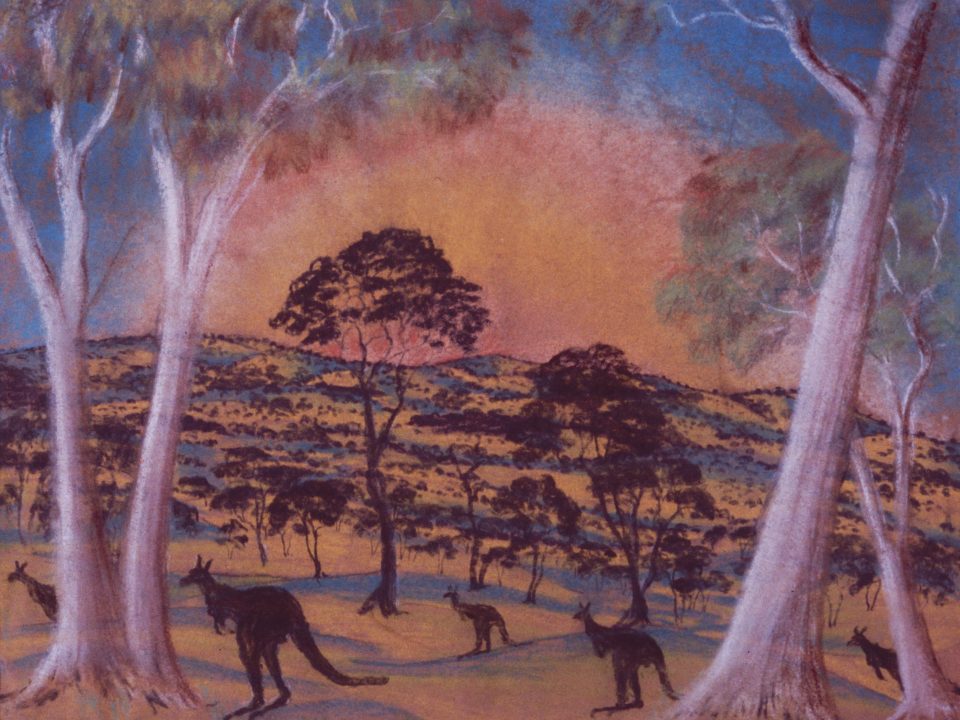Parnell Dempster b. 1936
Also known as Parnie Dempster
Artist (Painter)
From “Design & Art Australia On-Line“
By Laura Fisher, 2009

Parnell Dempster
One of the most renowned of the Carrolup Children artists. His work is in the collections of the Berndt Museum of Anthropology, the Art Gallery of Western Australia and the Picker Gallery at Colgate University, New York.
Parnell Dempster, Noongar artist, was born circa 1936. Dempster was one of the most renowned of the Carrolup children artists who created work at the Carrolup Native Settlement (later known as Marribank) near Katanning in Western Australia, under the tutelage of headmaster Noel White between 1945 and 1951. The Carrolup children’s drawings and paintings came to be exhibited and sold to wide acclaim in Australia, New Zealand and Europe in the late 1940s and early 1950s. In Nyungar Landscapes (2002), Stanton writes of how White came to treat artmaking as a serious endeavour at the Carrolup school, following his arrival at Carrolup in 1945:
“Noticing one of the children, Parnell Dempster, drawing on scraps of paper, White provided better materials and within weeks the children’s efforts had developed from doodles into complex designs and geometric shapes and naturalistic features of the local landscape. Concerned to encourage the pupils, White began taking the children on walks in the bush, after which they would return to the classroom and draw what they had observed in nature – each hiding their work from the eyes of others, until it was finished.” (1992, pg 9).

Some of the Carrolup young artists.
Front row: Reynold Hart (Far Left), Parnell Dempster (Middle), Ross Jones (2nd Right) and Revel Cooper (Far Right). Back row: Claude Kelly (Far Left) and Barry Loo (2nd Left). Mary Durack Miller Collection, J. S. Battye Library of West Australian History.
Dempster established a friendship with Florence Rutter, a British woman who visited the settlement in 1949 and subsequently organised many of their overseas exhibitions. On one visit, Rutter taught Dempster how to use oil paints (Pushman & Walley 2006, pg 49). Many of the Carrolup children wrote letters to Rutter, and Dempster’s provide a moving record of the sense of empowerment and self-worth that the art movement generated amongst the children, and the tragedy of it’s conclusion due to the displeasure of the Department of Native Affairs that resulted in White’s tenure being terminated and the Settlement being closed down in 1951. When he was fourteen, Dempster wrote to Rutter:
“I would like to become something good. I don’t like camp life. I would like to be a commercial artist to a paper. Or I would like a job in a Printing Press. I am going to send you some drawing of our native weapons. Well, Mrs Rutter, thank you very much for sending me those paintings.” (quoted in Stanton 1992, pg 23).
Following the closure of the Carrolup Native Settlement, Dempster commenced work as an office boy in Perth, but was unhappy and homesick and did not last long in this position (Miller & Rutter 1952, pg 72).
Landscape by Parnell Dempster, pastel on paper,
29 x 37cm, c.1948.
Donated through the Australian Government’s Cultural Gifts Program by Melvie, Stan and Gael Phillips, Berndt Museum of Anthropology, The University of Western Australia [1992/0113].
From “The Carrolup Story” website
Many of Dempster’s pastel works and paintings, which are predominantly landscapes, are in the collections of the Berndt Museum of Anthropology and the Art Gallery of Western Australia. His works also form part of the Picker Gallery Collection at Colgate University. A large collection of Carrolup works that had been accumulated by Rutter were later acquired by New Yorker Herbert A. Mayer, who was an alumnus of Colgate University and donated the collection to the University in the late 1960s, when the Picker Gallery was established. The collection had been catalogued and conserved, but it’s significance was not discovered until the works were identified by Australian anthropologist Howard Morphy when he visited Colgate University in 2004. The exhibition ‘Koorah Coolingah (Children Long Ago)’ which took place at the Katanning Arts Centre and the Western Australian Museum in Perth during the 2006 Perth International Arts Festival saw a number of the Picker collection works, including two of Dempster.s, return to Australia temporarily.
One of Dempster’s most distinctive works is Explorers’ massacre, painted in watercolour and ink (c. 1948). It depicts white men gathering outside their tents, gesticulating with their guns as a large group of Aboriginal people with spears and boomerangs appear over the verge of the hill before them. The surrounding landscape is eerily barren and the sky has a foreboding red blush. This work was included in ‘South West Central: Indigenous art from south Western Australia 1833-2002’ at the Art Gallery of Western Australia in Perth (2003).
In his adult years, Dempster lived and worked in Perth, and passed away c. 2000.
Writers: Fisher, Laura Date written: 2009

